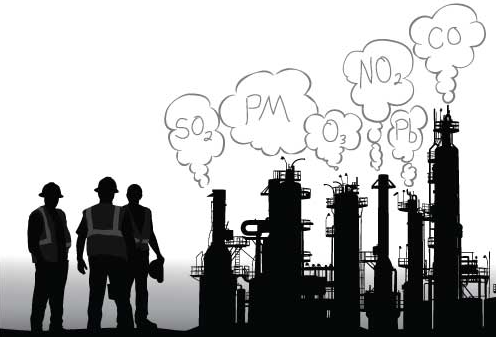Air Toxics & Criteria Pollutants – What’s the Difference?

Criteria Pollutants
There are six criteria pollutants designated by the U.S. Environmental Protection Agency (USEPA):
- Carbon Monoxide (CO)
- Ozone (O₃)
- Particulate Matter (PM₂.₅ and PM₁₀)
- Nitrogen Dioxide (NO₂)
- Sulfur Dioxide (SO₂)
- Lead (Pb)
Criteria pollutants have National Ambient Air Quality Standards (NAAQS) in place to protect human health and welfare. EPA establishes these standards and state, local, and tribal governments are tasked with monitoring the air to determine whether they are met. Areas are then categorized based on their success in meeting these standards for criteria pollutants:
- Nonattainment areas do not meet NAAQS. These areas require planning and action by the state to work toward meeting standards.
- Attainment areas are those where criteria pollutant levels are within the EPA mandated threshold.
NJDEP develops State Implementation Plans to implement, maintain, and enforce National Ambient Air Quality Standards.
The 6 criteria pollutants are described below. Hover over images to read about each pollutant. Note that lead is the only criteria pollutant that is also recognized as a hazardous air pollutant.

Air Toxics
Air toxics are chemicals released into the air, excluding criteria pollutants other than lead, that have the potential to cause adverse health effects in humans. Effects can be acute or chronic and include conditions ranging from lung irritation to birth defects or cancer.
Most air toxics originate from human-made sources, including mobile sources (e.g., cars, trucks, buses) and stationary sources (e.g., factories, refineries, power plants), as well as indoor sources (e.g., some building materials and cleaning solvents). Some air toxics are also released from natural sources such as volcanic eruptions and forest fires.
Hazardous Air Pollutants (HAPs)
There are no National Ambient Air Quality Standards (NAAQS) for air toxics. However, the 1990 amendments to the Clean Air Act created a list of nearly 200 air toxics, known as Hazardous Air Pollutants. The EPA has since been developing control technology standards to address these harmful pollutants and categorize the sources from which they are emitted.
The images below provide further insight to what makes a pollutant an air toxic, as well as some examples of common urban air toxics. NJDEP monitors several air toxics, including benzene, toluene, ethylbenzene, xylenes, and more. Hover over images to learn more.